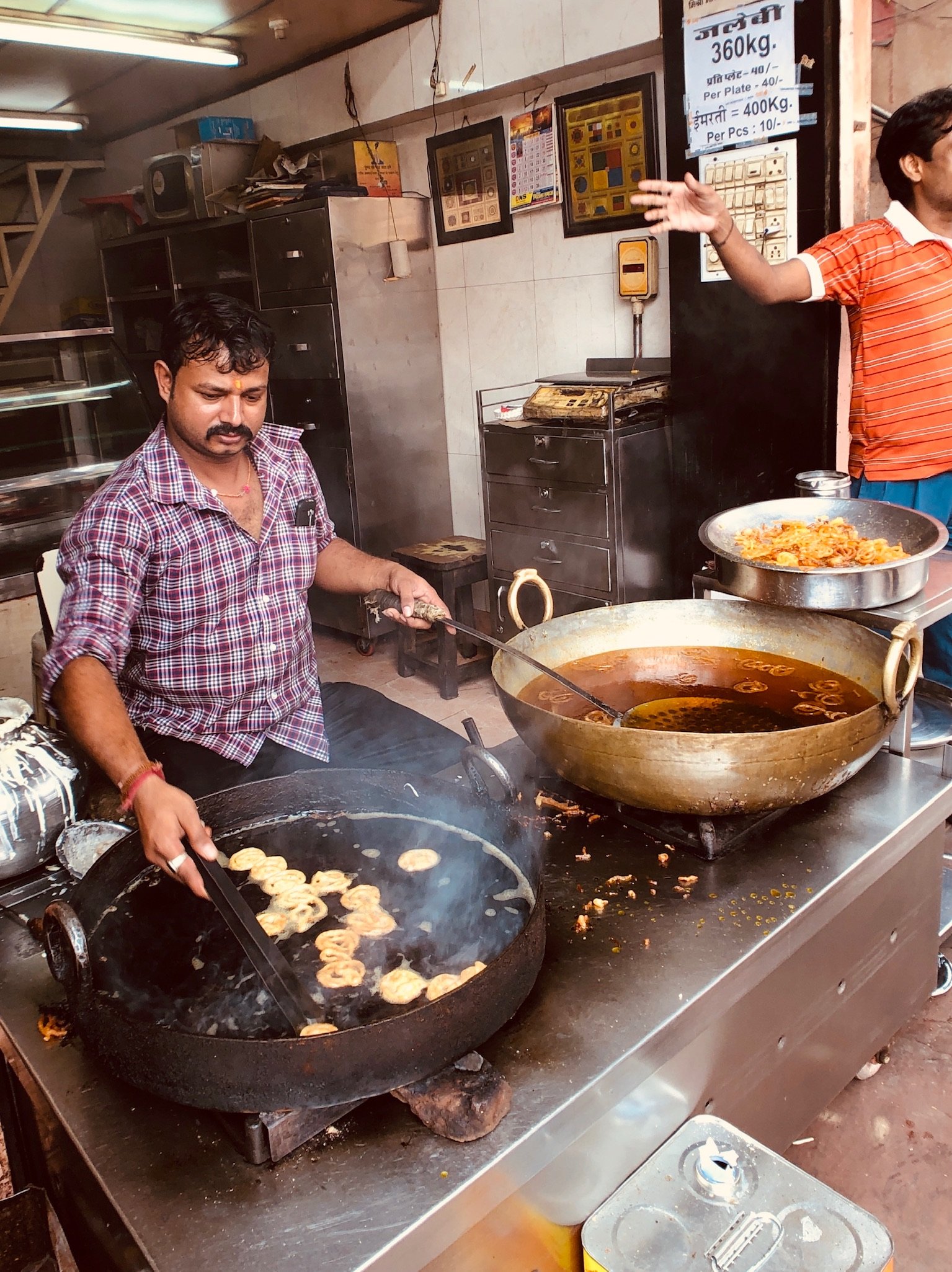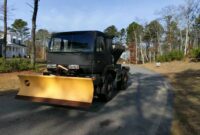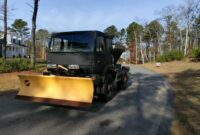The Food Truck Salvage Yard: A Treasure Trove for Mobile Culinary Dreams sale.truckstrend.com
In the dynamic and often demanding world of mobile gastronomy, efficiency, creativity, and cost-effectiveness are paramount. Food truck operators constantly seek innovative ways to stand out, maintain their vehicles, and upgrade their kitchens without breaking the bank. While new equipment and custom builds often come with hefty price tags, there exists an unsung hero for budget-conscious entrepreneurs and seasoned veterans alike: the Food Truck Salvage Yard.
Far from being a mere graveyard for defunct vehicles, a food truck salvage yard is a vibrant, often surprising, ecosystem where the discarded components of one culinary dream can become the vital organs of another. It’s a specialized automotive and equipment junkyard tailored to the unique needs of the mobile food industry. Here, retired, damaged, or repossessed food trucks are meticulously disassembled, their valuable parts salvaged, cleaned, and often reconditioned, ready for a second life. For those in the know, these yards represent a crucial resource, offering everything from commercial-grade fryers and stainless steel prep tables to hard-to-find serving windows and custom exhaust hoods, all at a fraction of the cost of new. It’s a testament to ingenuity, sustainability, and the enduring spirit of entrepreneurship in the food truck community.
The Food Truck Salvage Yard: A Treasure Trove for Mobile Culinary Dreams
I. What Exactly is a Food Truck Salvage Yard?
A food truck salvage yard, often an extension of a larger auto salvage operation or a specialized commercial vehicle graveyard, is a facility dedicated to the acquisition, dismantling, and resale of components from retired or non-functional food trucks. Unlike a general auto junkyard that focuses primarily on engine parts and body panels, a food truck salvage yard prioritizes the unique elements that make a food truck operational: its kitchen equipment, utility systems, and specialized structural components.
These yards source their inventory from various channels:
- Decommissioned or Retired Trucks: Operators selling off older models as they upgrade.
- Damaged Vehicles: Trucks involved in accidents where the chassis is totaled but the interior equipment remains intact.
- Repossessed or Foreclosed Units: Financial difficulties can lead to trucks being seized and then sold for parts.
- Donated or Abandoned Trucks: Less common, but sometimes a source for older, unique components.

The process typically involves careful assessment of the incoming vehicle. Usable parts are extracted, inventoried, and often stored in a warehouse or designated area. Items like commercial kitchen appliances, generators, water tanks, and custom fabrication elements (serving windows, counters) are particularly valuable. These yards are not just about scrap metal; they are about giving functional, albeit used, components a new lease on life, promoting a circular economy within the food truck industry.
II. The Unsung Benefits of Salvage Yards for Food Truckers

Leveraging a food truck salvage yard offers a multitude of advantages that can significantly impact a food truck’s bottom line and operational longevity.
- Significant Cost Savings: This is by far the primary benefit. New commercial kitchen equipment is prohibitively expensive. A used fryer from a salvage yard might cost 30-50% less than a new one, and a stainless steel prep table could be found for pennies on the dollar. For startups on a tight budget or established trucks needing an emergency repair, these savings are invaluable.
- Sustainability & Recycling: By purchasing used parts, food truck owners contribute to a more sustainable industry. They reduce demand for new manufacturing, conserve resources, and prevent perfectly usable items from ending up in landfills. It’s a practical application of the "reduce, reuse, recycle" philosophy.
- Finding Rare or Obsolete Parts: For owners of older or custom-built food trucks, finding replacement parts can be a nightmare. Salvage yards often hold a treasure trove of components no longer manufactured or readily available, making them essential for keeping vintage or unique rigs on the road.
- Inspiration & Customization: Walking through a salvage yard can spark creativity. Seeing various layouts, custom fabrication elements, and equipment types from different trucks can provide fresh ideas for a new build or an existing truck’s redesign. You might find a unique serving window or a cleverly designed storage solution you hadn’t considered.
- Quick Availability: Unlike ordering new equipment that might have lead times for manufacturing and shipping, parts at a salvage yard are typically available immediately. This is crucial for urgent repairs that could otherwise lead to costly downtime.

III. Navigating the Salvage Yard: A How-To Guide for Food Truckers
A successful visit to a food truck salvage yard requires preparation, keen observation, and a bit of savvy.
-
Research & Preparation:
- Identify Your Needs: Before you go, make a detailed list of what you’re looking for, including dimensions, power requirements (voltage, gas type), and specific features.
- Call Ahead: Contact the salvage yard to inquire about their inventory. Many yards specialize or update their stock frequently. Save yourself a trip if they don’t have what you need.
- Understand Policies: Ask about their pricing structure, warranty (if any, usually "as-is"), return policy, and whether you can pull parts yourself or if staff assistance is required.
-
What to Look For & Inspection Tips:
- Kitchen Equipment: Check for rust, dents, missing knobs/parts, and overall structural integrity. If possible, test electrical components (with permission and safety precautions). For gas appliances, look for cracked lines or burners.
- Plumbing & Water Systems: Inspect tanks for cracks, leaks, or significant discoloration. Check pumps for signs of corrosion.
- Electrical Systems: Look for frayed wires, burnt outlets, or corroded terminals.
- Exterior & Structural: Assess serving windows for smooth operation, intact glass, and proper sealing. Check for rust on body panels or structural members.
- Compatibility: Always bring measurements! A 3-compartment sink from one truck might not fit the cut-out in yours. Ensure gas lines, electrical connections, and mounting points align.
-
Tools to Bring:
- Measuring Tape: Absolutely essential for dimensions.
- Flashlight: For inspecting dark corners or interiors of equipment.
- Basic Wrenches/Screwdrivers: If permitted to remove smaller parts yourself.
- Camera/Smartphone: To take photos for reference or to send to a mechanic for approval.
- Gloves & Sturdy Shoes: For safety and hygiene.
- Notebook & Pen: To jot down part numbers, prices, and observations.
-
Negotiation: Prices at salvage yards are often negotiable, especially for larger items or if you’re buying multiple components. Be polite, knowledgeable, and ready to make a reasonable offer. Highlighting minor imperfections can sometimes lead to a better deal.
-
Safety First: Salvage yards can be hazardous environments. Be aware of uneven surfaces, sharp objects, heavy equipment, and moving vehicles. Follow all yard rules and wear appropriate safety gear.
IV. Key Components and Equipment You Might Find
A well-stocked food truck salvage yard is a veritable smorgasbord of essential components:
- Kitchen Equipment:
- Cooking Appliances: Commercial griddles, flat-top grills, fryers (single or double basket), convection ovens, charbroilers, salamanders.
- Refrigeration: Undercounter refrigerators, reach-in freezers, prep tables with refrigerated bases.
- Sinks & Prep: Stainless steel 3-compartment sinks (required by health codes), handwash sinks, stainless steel prep tables, shelving units.
- Ventilation: Commercial exhaust hoods with fire suppression systems (often the most expensive new item, a huge saving if found used), exhaust fans.
- Plumbing & Water Systems:
- Freshwater tanks, greywater tanks, water pumps, water heaters (tankless or traditional), plumbing lines and fittings.
- Electrical Systems:
- Generators (various sizes and fuel types), electrical panels, wiring harnesses, outlets, interior and exterior lighting fixtures.
- Exterior & Structural:
- Serving windows (various styles and sizes), access doors, custom fabrication elements (e.g., specific counter shapes, custom storage solutions), awnings, exterior body panels (less common but possible for cosmetic repairs).
- Chassis & Automotive (for the truck itself):
- Engines, transmissions, axles, tires, brake components – typically found in the automotive section of a combined yard, crucial for keeping the vehicle mobile.
V. Challenges and Considerations
While beneficial, navigating a food truck salvage yard comes with its own set of challenges:
- Condition Variability: Parts are used, and their condition can range from nearly new to heavily worn or slightly damaged. Thorough inspection is crucial.
- Compatibility Issues: As mentioned, a part from one truck might not seamlessly fit another. Custom fabrication or modifications might be needed, adding to the overall cost.
- Warranty & Returns: Most items are sold "as-is," with no warranty or return policy. Once you buy it, it’s yours.
- Labor & Installation Costs: A cheap part isn’t cheap if it costs a fortune to install or requires significant professional modification. Factor in labor costs.
- Finding Specific Items: Inventory is constantly changing. What you need might not be available, or you might have to wait. Conversely, you might stumble upon a perfect part you didn’t even know you needed.
- Safety & Regulatory Compliance: Used kitchen equipment, especially gas or electrical, must be inspected by a qualified professional to ensure it meets health and safety codes. Some jurisdictions might have strict rules about used commercial equipment. Always prioritize safety and compliance.
VI. Tips for Success at the Food Truck Salvage Yard
To maximize your chances of a successful and cost-effective trip:
- Go with a detailed list, but remain flexible: You might not find the exact model of fryer you wanted, but an equally good alternative could be available.
- Bring a knowledgeable friend or mechanic: An extra pair of eyes, especially from someone with technical expertise, can spot issues you might miss.
- Test what you can: If it’s an electrical component, ask if there’s a way to test it. For mechanical parts, check for smooth movement.
- Build relationships: Regular visits and respectful interactions with yard staff can lead to them remembering you and even calling you when specific items arrive.
- Consider the "total cost": Don’t just look at the price tag. Factor in potential repair costs, cleaning, and installation. A seemingly cheap part might become expensive if it needs extensive work.
- Document everything: Take photos of the part, its condition, and any identifying marks or serial numbers. This helps with installation and future reference.
Sample Price Ranges for Food Truck Salvage Yard Components
It’s important to note that prices at a food truck salvage yard are highly variable, depending on the item’s condition, rarity, original cost, demand, and the specific yard’s pricing policy. The table below offers estimated price ranges for common components, serving as a general guide rather than a definitive price list. Always negotiate and inspect thoroughly!
| Component Category | Specific Item | Estimated Salvage Price Range (USD) | Notes & Considerations |
|---|---|---|---|
| Cooking Equipment | Commercial Griddle (24-36") | $300 – $800 | Check for even heating, burner condition. New: $1,500 – $4,000+ |
| Commercial Fryer (single/double) | $250 – $700 | Check baskets, oil pan, burner function. New: $1,000 – $3,000+ | |
| Charbroiler (24-36") | $200 – $600 | Inspect grates, burners, grease tray. New: $800 – $2,500+ | |
| Convection Oven | $400 – $1,200 | Check fan, heating elements, door seal. New: $2,000 – $5,000+ | |
| Refrigeration | Undercounter Fridge/Freezer | $350 – $900 | Check compressor noise, cooling, door seals. New: $1,500 – $4,000+ |
| Prep Table with Cold Rail | $400 – $1,000 | Check refrigeration unit, cutting board condition. New: $2,000 – $5,000+ | |
| Sinks & Prep | 3-Compartment Sink (SS) | $150 – $400 | Inspect for dents, rust, drain connections. New: $500 – $1,200+ |
| Handwash Sink (SS) | $50 – $150 | Check faucet, basin integrity. New: $150 – $400+ | |
| Stainless Steel Prep Table | $100 – $300 | Check stability, surface condition. New: $300 – $800+ | |
| Ventilation | Commercial Exhaust Hood (incl. fans) | $500 – $2,000 | Check for damage, grease build-up, fire suppression (if included). New: $2,000 – $10,000+ |
| Water Systems | Fresh/Grey Water Tanks (30-50 gal) | $50 – $150 | Inspect for leaks, cracks, cleanliness. New: $100 – $300+ |
| Water Pump (12V) | $30 – $80 | Test functionality if possible. New: $80 – $200+ | |
| Water Heater (Small/Tankless) | $100 – $300 | Check for leaks, heating elements. New: $300 – $800+ | |
| Electrical | Generator (2,000-7,000W) | $300 – $1,500 | Check hours, starting, power output. New: $800 – $4,000+ |
| Electrical Panel/Breaker Box | $50 – $200 | Inspect wiring, fuses/breakers. New: $200 – $500+ | |
| Exterior/Other | Serving Window (standard size) | $200 – $600 | Check frame, glass, locking mechanism, seals. New: $800 – $2,500+ |
| Awnings (retractable) | $100 – $400 | Check fabric condition, retraction mechanism. New: $500 – $2,000+ |
Frequently Asked Questions (FAQ) about Food Truck Salvage Yards
Q1: Is it worth buying used equipment from a food truck salvage yard?
A1: Absolutely, for many operators. The primary benefit is significant cost savings, which can be crucial for startups or when facing unexpected repairs. If you’re willing to inspect thoroughly, potentially clean or make minor repairs, and ensure compliance, it can be a highly cost-effective and sustainable solution.
Q2: How do I know if a part from a salvage yard is good quality or still functional?
A2: Thorough inspection is key. Look for visible damage, rust, missing components, and signs of excessive wear. For electrical items, check wiring for fraying or burning. For gas appliances, look for cracked lines or corroded burners. If possible, ask to test the item. Bring a knowledgeable friend or mechanic for complex items. Always assume "as-is" unless explicitly stated otherwise.
Q3: Can I sell my old food truck or its parts to a salvage yard?
A3: Yes, many food truck salvage yards or commercial vehicle salvage operations will purchase old, damaged, or non-operational food trucks for their parts. Contact them directly to inquire about their buying process and valuation. They might also buy specific high-value components.
Q4: Do food truck salvage yards offer delivery or installation services?
A4: Generally, no. Most salvage yards operate on a "you buy, you haul" basis. You’ll need to arrange for transportation of larger items. Installation is typically your responsibility or that of your chosen mechanic/fabricator. Some might have preferred transport partners they can recommend.
Q5: What about health code compliance for used equipment purchased from a salvage yard?
A5: This is a critical consideration. While a part may be functional, it must also meet local health and safety regulations. Used cooking equipment and plumbing systems should be thoroughly cleaned, sanitized, and inspected by a qualified professional (e.g., licensed plumber, certified gas technician) before installation and use. Always check with your local health department for specific requirements regarding used commercial kitchen equipment. In some cases, heavily used or uncertifiable items might not pass inspection.
Conclusion: The Strategic Resource for Mobile Culinary Success
The food truck salvage yard, often overlooked or misunderstood, stands as a strategic and invaluable resource for the mobile culinary industry. It embodies a practical approach to sustainability, offering a second life to essential equipment and components that would otherwise be discarded. For entrepreneurs dreaming of launching their first food truck, it provides an accessible entry point, dramatically reducing the initial capital investment. For established operators, it’s a reliable source for affordable repairs, upgrades, and unique customization opportunities, minimizing downtime and maximizing profitability.
Navigating these yards requires diligence, a keen eye, and an understanding of the inherent risks of buying used. However, with careful planning and smart execution, the treasures found within a food truck salvage yard can be the very foundation upon which a thriving and unique mobile culinary business is built, proving that one truck’s end can indeed be another’s delicious beginning.




